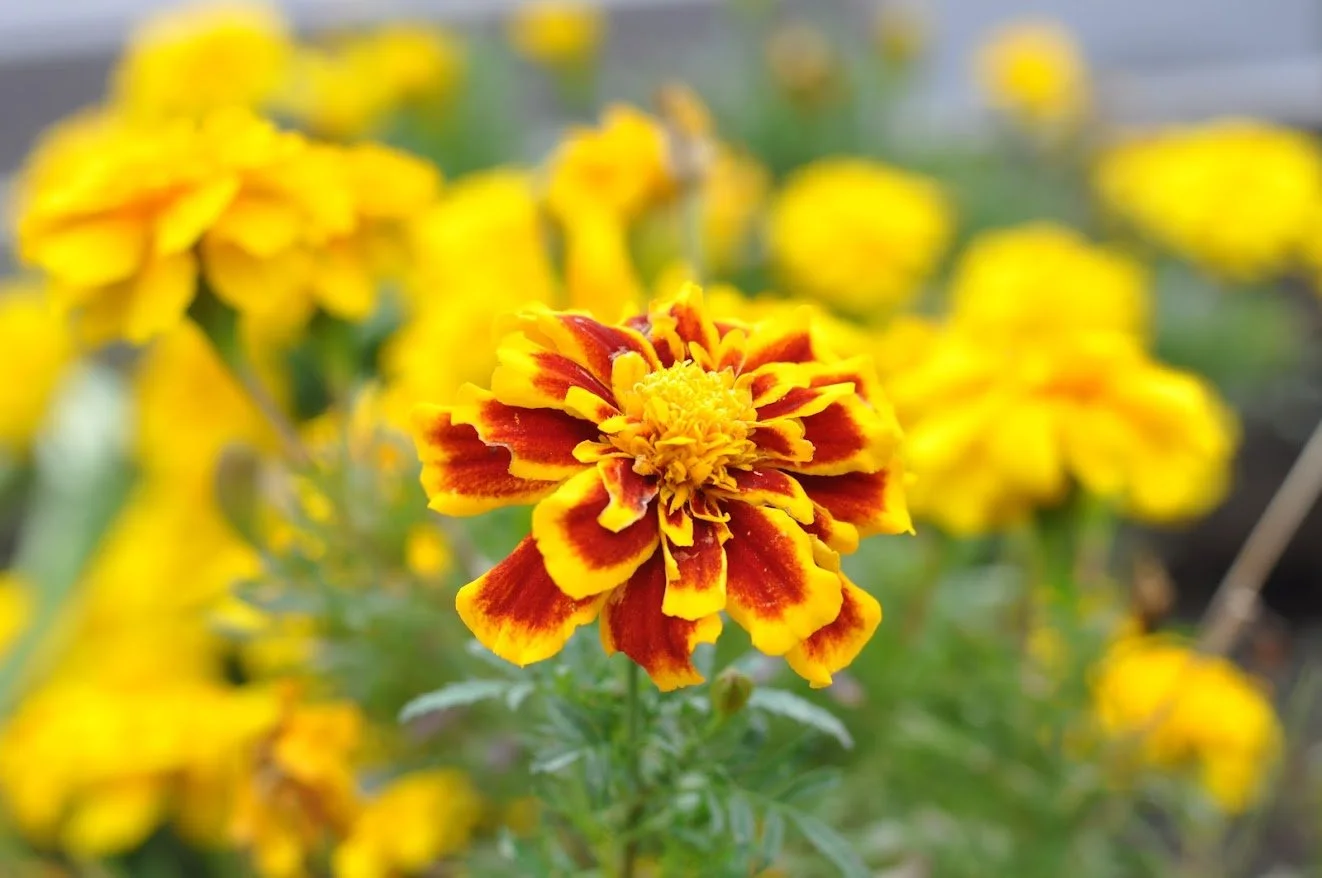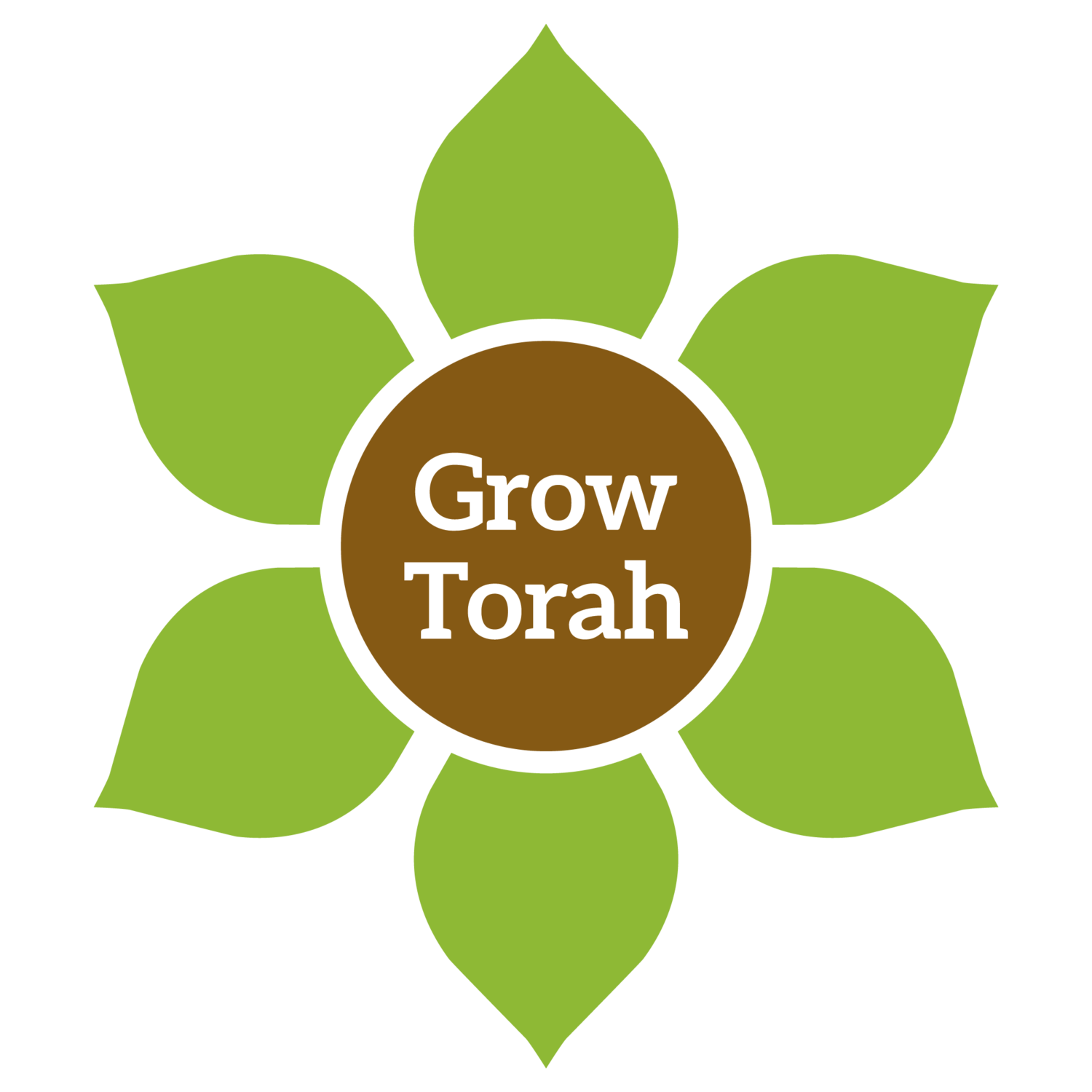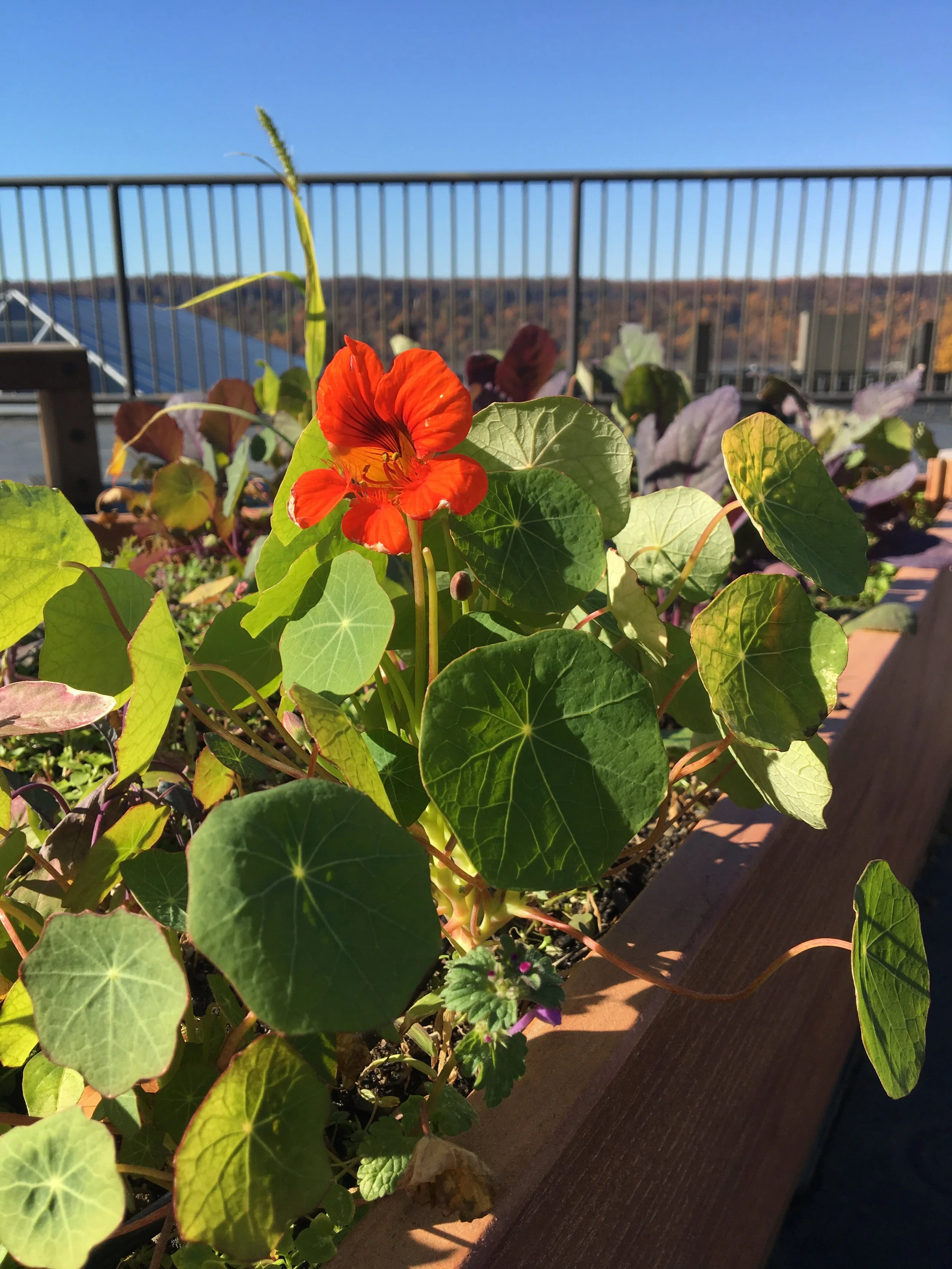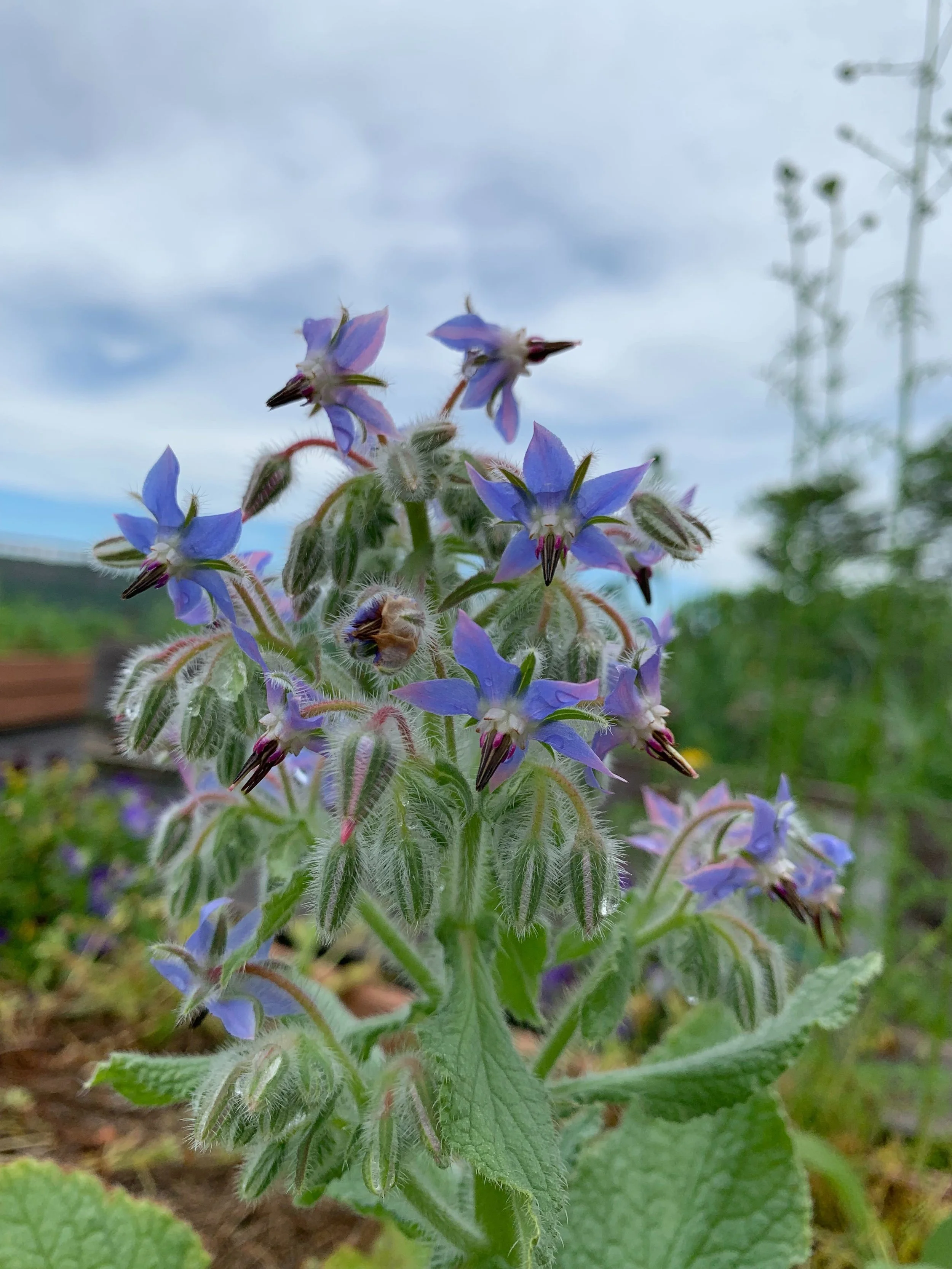
Plant library
Welcome to the GrowTorah & Torah VeHa’aretz Institute plant library!
We are so proud to present you with this treasure trove of information, much of which has been generously provided by Torah VeHa’aretz Institute.
Click through to read about agricultural, historical and halachic information related to each plant. We hope you enjoy learning with us!
-
אַספָּרָגוּס
Asparagus officinalis is a perennial plant native to southern Europe and the Crimea. It grows 3–5 feet tall and requires about three years to establish its crown before producing reliable harvests.
-
אֵרוּגוֹלָהּ
Eruca sativa is an annual plant native to the Mediterranean, Western Asia, North Africa, and China grown for the consumption of both its leaves and seeds.
-
שְׂעוֹרָה
Hordeum vulgare is a fast-growing cereal grain with a flowering structure called a spike composed of many spikelets along its axis. Barley is one of the seven species of Israel and was originally cultivated in the region.
-
רֵיחָן / בָּזִילִיקוּם
Ocimum basilicum is an herb that can be grown as an annual or perennial based on the variety and is native to Asia and Africa.
-
פּוֹל, שְׁעוּעִית
Fabaceae thrives in warm weather and provides edible pods, fresh beans, and dry seeds. Valued since antiquity, beans have long served as protein-rich staples adapted to local climates.
-
שְׁעוּעִית פַּאוָוה
Vicia faba are annual legumes rich in plant protein, used for both human consumption and animal feed. In many regions, such as Egypt, they are a dietary staple eaten fresh or dried and were originally used to make falafel.
-
סֶלֶק
Beta vulgaris is a root vegetable typically grown annually, though it is technically biennial producing seeds in it’s second year of growth. Both its roots and antioxidant-rich leaves are edible.
-
זִיפָּן
Borago officinalis is a Mediterranean annual herb with blue flowers that benefits garden ecosystems by attracting pollinators, repelling pests, and enriching the soil with trace minerals.
-
בְּרוֹקוֹלִי
Brassica oleracea var. italica is a cool-season annual vegetable from the Mediterranean, grown for its thick stalk and clusters of edible green flower buds. It is harvested before the buds bloom into yellow, seed-producing flowers.
-
כְּרוֹב
Brassica oleracea is a biennial plant though typically grown as an annual. If not harvested a flowering stalk develops in its second year of growth where seeds will form.
-
גֶזֶר
Daucus carota is a root vegetable rich in pigments and sugars, turning woody and inedible under harsh conditions or with age. Its orange color comes from carotene, and purple varieties are cultivated for natural food coloring.
-
כְּרוּבִית
Brassica oleracea var. botrytis is an annual vegetable originally cultivated in the Mediterranean region. The plant forms a dense compact head made up of undeveloped flower buds.
-
קָמוּמִיל
Matricaria chamomilla is grown both as an annual and perrenial based on variety for it’s small daisy-like blooms used most commonly for tea.
-
עִירִיּת
Allium schoenoprasum are the smallest of the plants in the allium family with thin green stems, producing either purple or white star shaped flowers depending on the variety.
-
כּוּסְבָּרָה
Coriandrum sativum is an herb grown for both it’s leaves and seeds and is commonly referred to as coriander in most countries.
-
תִירָס
Zea mays is the world’s third most widely grown crop, with hundreds of varieties used for food, animal feed, oils, sweeteners, and fuel.
-
מְלָפְפוֹן
Cucumis sativus is a long, slender summer vegetable grown on vines and was a major food source in ancient times.
-
שָׁמִיר
Anethum graveolens is an herb grown for its leaves and seed clusters. It became a key flavor in Jewish pickling traditions, giving rise to the classic kosher dill pickle.
-
חָצִיל
Solanum melongena is a heat-loving plant, grown as either an annual or perennial, producing glossy fruits that are typically purple.
-
תְאֵנָה
Ficus carica ripen in several phases requiring daily picking to avoid spoilage. Each fig is a hollow, pear-shaped structure pollinated by a tiny wasp, though some varieties develop fruit without pollination through parthenocarpy, producing seedless figs.
-
שׁוּם
Allium sativum is a perennial herb with bulbs containing 10–12 cloves varying in size and skin color. It propagates from cloves rather than seeds, as its flowers don’t typically produce seeds.
-
עֲנָבִים
Vitis vinifera is a vigorous climbing plant that can grow sprawling on the ground or trained on a trellis, requiring annual pruning for healthy growth and quality yield. It is one of the Seven Species of Israel and is the first tree mentioned in the verse that lists them.
-
שֶׁלַּפָּח / דֻּבְדְּבָן הַיְּהוּדִים
Physalis is a small, bushy plant with golden-orange fruits enclosed in papery husks that have a flavor reminiscent of pineapple, vanilla, and tomato.
-
חֲזֶרֶת
Armoracia rusticana is a large white root vegetable with edible roots and leaves with a spicy, bitter flavor. It is traditionally used on Pesach as one of the five plants approved for Marror by the Mishneh Torah.
-
אֵזוֹב
Hyssopus officinalis is a low-growing perennial plant that regenerates from its woody base, keeping it only a few dozen centimeters tall. It is a key ingredient in the za’atar spice blend.
-
קֵיְיל
Brassica napus is an annual plant from the Cruciferae family, valued for its edible leaves, which can be eaten raw or cooked.
-
קוֹלרַבִּי
Brassica oleracea is a vegetable with an edible thick stem, maturing roughly two months after sowing and remaining harvestable for another month.
-
לַוַנְדֶּר
Lavandula is a fragrant, woody perennial from the Labiatae family, primarily valued for its scent and medicinal uses.
-
מְּלִיסָה
Melissa officinalis is a bushy perennial growing 1–3 feet tall with lemon-scented leaves and small white flowers. It spreads easily and is best harvested just before flowering for maximum essential oil content.
-
לוֹאִיזָה לִימוֹנִית
Aloysia citrodora is a woody perennial with leaves that have a distinct lemony aroma.
-
חָסָה
Lactuca sativa is an annual plant and one of the first vegetables domesticated, with a slightly sweet taste early in growth that turns bitter after bolting.
-
צִפּוֹרנֵי חָתוּל
Calendula officinalis is an annual plant grown for their yellow, orange, red, or multicolored flowers, with bushy or tall varieties. They are commonly used as companion plants to deter pests and attract pollinators.
-
נַעְנַע
Mentha is a perennial herb with a herbaceous stem and a rhizome that spreads horizontally, sending up stems and roots while surviving winter dieback. Like other Lamiaceae members, it contains aromatic essential oils.
-
חָסָה אַסְיָאתִי
Brassica juncea var. japonica is an annual cruciferous plant, also called Japanese mustard greens, with edible leaves that have a stronger flavor than arugula or mustard. It is commonly used in salads and leafy green mixes.
-
חַרדָל
Brassica juncea is a plant cultivated for its seeds and leaves, the latter eaten as mustard greens, while its seeds are ground and mixed with water or vinegar to make prepared mustard.
-
כּוֹבַע נָזִיר
Tropaeolum is an annual plant with round leaves and orange, red, or yellow trumpet-shaped flowers. Its leaves, flowers, and seeds are edible, with a mild peppery flavor.
-
בָּצָל
Allium cepa is a perennial plant with an underground storage bulb, consisting of a basal plate, leaves that form dry scales, and green blades above ground. Its pungent flavor comes from compounds in the scales, and it can be left in the ground for up to two years.
-
אוֹרֶגָנוֹ
Origanum vulgare is a low-growing perennial herb used as a spice, with oil valued for medicinal purposes. It regrows from its woody base while stems dry out, maintaining a compact profile.
-
פֶּטְרוֹזִילְיָה
Petroselinum crispum is an annual grass primarily used as a spice, but also has many uses in traditional medicine and religious rituals.
-
גֶזֶר לָבָן
Pastinaca sativa are pale root vegetables similar to carrots. They are biennial plants but are usually grown as annuals for their edible roots.
-
אֲפוּנָה
Pisum sativum is an edible legume long cultivated as a staple crop. Its pods contain round green seeds that are cooked and valued as a nutritious source of plant-based protein.
-
תַּפּוּחַ אֲדֻמָה
Solanum tuberosum are underground tubers from the nightshade family, typically grown as annuals from “seed potatoes.” They became a global staple for their reliability and versatility eaten in countless dishes and even used for making flour, starch, and vodka.
-
צְנוֹן
Raphanus raphanistrum is an annual root vegetable. Its cells contain compounds that protect the plant from pests, releasing a sharp odor and taste when exposed to oxygen.
-
רוֹזמָרִין
Salvia rosmarinus is a perennial plant whose leaves include essential oils. It’s commonly used culinarily to flavor food.
-
מַרוָה
Salvia officinalis is a perennial plant with a woody base and green branches that bear fuzzy, fragrant leaves and flowers.
-
תֶרֶד
Spinacia oleracea is a leafy green annual with tender leaves that vary from smooth to crinkled. It thrives in cool weather and can be eaten raw or cooked in various dishes.
-
תּוּת
Fragaria × ananassa is a perennial herbaceous plant with a perennial root system and a lower stem that is sometimes woody. It spreads by sending out runners, horizontal stems that develop new roots at their tips.
-
סַקְוושׁ הַקַּיִץ
Cucurbita pepo is an annual, bushy, and sprawling plants with large rough leaves and bright yellow or orange flowers. Its fruits are harvested young with tender, edible skin and come in shapes such as elongated, scalloped, or crookneck.
-
חַמָנִית
Helianthus are tall annual plants with rough stems, broad toothed leaves, and large flower heads made of many small florets. Young plants track the sun, and their seeds can be used for food, oil, and feeding birds.
-
פִּלְפֵּל מָתוֹק
Capsicum annuum are upright, bushy plants with fruits that mature from green to colors like red, yellow, orange, purple, or brown. Grown annually in most regions, peppers are enjoyed raw, cooked, or roasted.
-
מִנְּגוֹלְד שֶׁוִּויצְרִי
Beta vulgaris subsp. cicla is a leafy cultivar of the common beet, grown for its edible leaves rather than its root. It has broad, colorful stalks and leaves with a distinct bitter-sour flavor.
-
לַעֲנָה
Artemisia dracunculus is a bushy perennial plant with narrow, lance-shaped leaves that have a licorice-like aroma and flavor.
-
תִּימִין
Thymus vulgaris is a low-growing perennial herb used as a spice, with its oil valued for medicinal purposes. It regrows from a woody base near the ground, keeping the plant compact while the upper stems dry out.
-
טוֹמַטִיוּס
Physalis philadelphica are perennial plants, usually grown as annuals, producing yellow flowers that develop into small green berries enclosed in a papery husk. Known for their tart, citrusy flavor, they are a staple in many Mexican and Central American dishes.
-
עַגְבָנִיָה
Solanum lycopersicum are plants that produce versatile fruits used fresh, cooked, crushed, or as a flavoring, with Israeli research contributing globally by developing cherry tomato varieties.
-
לֶפֶת
Brassica rapa is a vegetable with edible leaves, typically cooked like spinach, and a thick root that can be eaten raw, pickled, or cooked.
-
אֲבַטִּיחַ
Citrullus lanatus is a sprawling annual producing large, sweet, juicy fruits. Native to the African savanna, it was cultivated in ancient Egypt and later spread across the Middle East and Mediterranean.
-
סָקְוושׁ חוֹרֶף
Cucurbita maxima / moschata is an annual plant growing on sprawling vines with large leaves and tendrils. Its thick-rinded fruits are harvested when mature and can be stored for long periods, with hundreds of varieties available.
-
חִיטָּה
Triticum is an annual herbaceous plant with thousands of cultivars, grown for its seeds contained in ears on stalks. Its growing season varies by region, with sowing in fall and harvesting in spring in Israel, and the reverse in other countries.
-
זִינְיהָ
Zinnia elegans are annual plants with long-lasting flowers in a wide range of colors. They are “cut and come again” flowers, valued for their beauty and for attracting pollinators like bees and butterflies.










